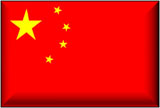West
East Corporation
中国的合作伙伴 : 投资中国,在中国做生意,在中国咨询,使中小型企业国际化
Growth in profits for foreign banks in China
August, 2012Chinese banking system has been affected, in recent decades, from important regulatory changes, among other to open the credit market to foreign investors, with the aim of defining a structure in line with that one of advanced countries and able to support the country's economic development.
In the deep process of reforming the Chinese banking system, which began in 1978 and to date still pending, the increase of foreign participation has undoubtedly been one of the key trends. A key contribution in this direction was represented by the access of China to the World Trade Organisation (WTO) in 2001: this circumstance has, in fact, forced Chinese leaders to implement interventions to ensure a gradual opening of the system to market.In the past, foreign banks in China have generally concentrated on limited areas of activity such as trade finance operations for foreign direct investments and interventions in support of foreign trade in China. Today, foreign banks can operate in China either directly, through the establishment of their branches and subsidiaries or indirectly, as a minority investor in the capital of Chinese institutes .
“The main challenge for foreign banks over the next three years will be balancing the investment and the needs of the Chinese market, dynamic and growing fast, with the limits imposed by the economic downturn in their respective countries.”
Many investors have also entered into cooperation agreements with domestic banks in non-core business, such as credit card segment. The possibilities, in operational terms, accorded to foreign actors are serving, however, still important limits set by national authorities. The results recorded from 185 foreign banks that currently have an active presence in China testify, however, the potential of the phenomenon in the future: according to data released by PricewaterhouseCoopers, in fact, the net profits of such operators would be more than doubled in 2011, passing from 7.78 billion yuan (about 1 billion euros) in 2010 to 16.73 billion yuan (about 2.14 billion euros) last year. According to the same survey, many foreign traders are predicting an annual growth of around 20% until 2015: this could represent a major alternative to national markets to pursue profits. The increase, it is said, is primarly due to the growth of investment by multinational companies in China .
关于我们
由于我们拥有专业人士和广泛的中国网,也叫作 " 关系 ",我们咨询公司能为打算投资中国的客户提供全方位的支持。而这(尤其是中小型企业)会使公司在中国做生意时的危险和失望减到最少。





